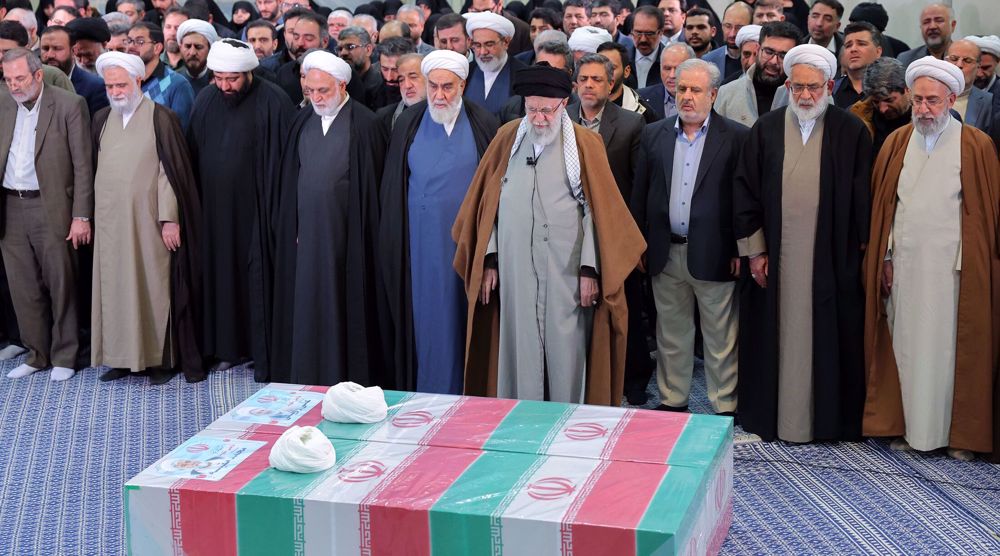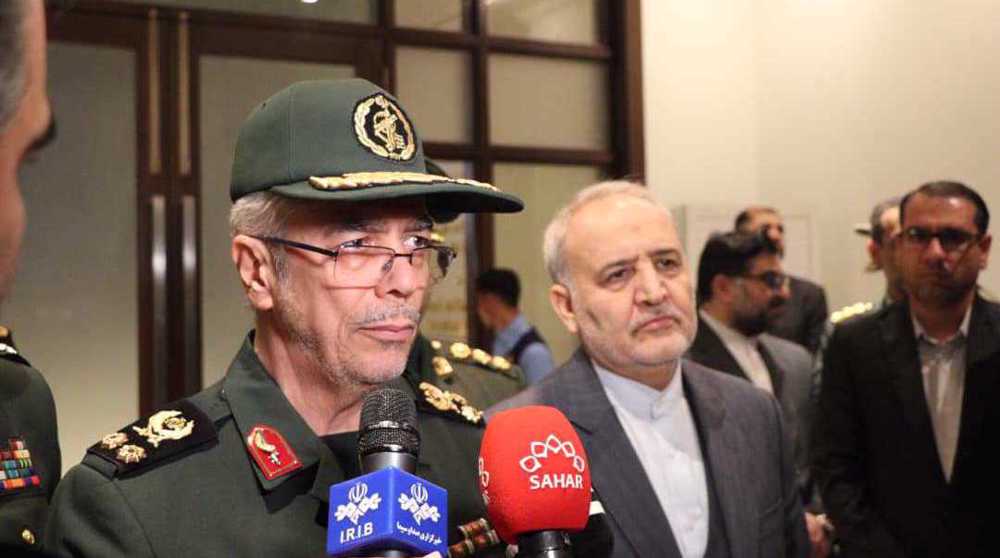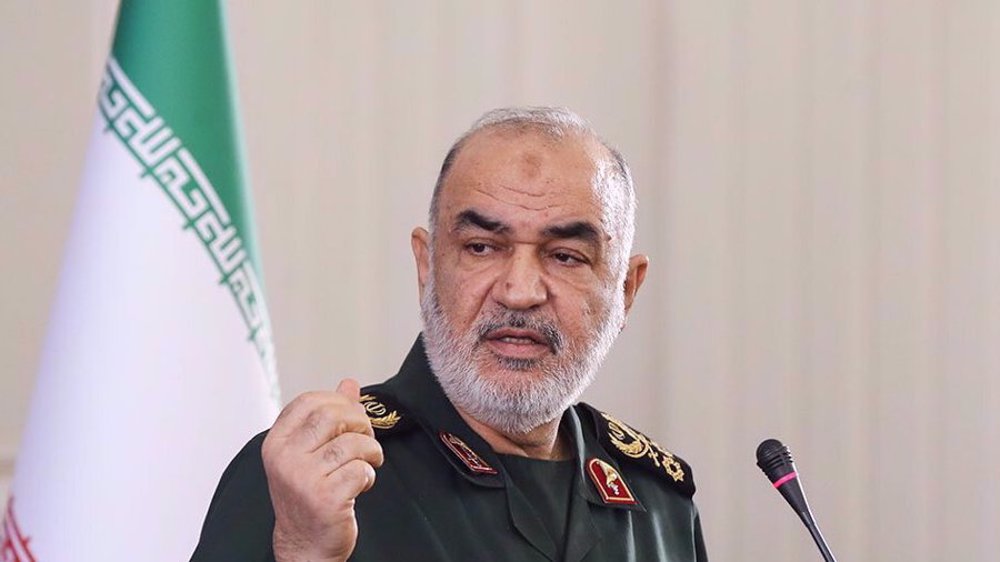US aviation sanctions taking toll on Iranian civilians
The Sunday crash of an Iranian ATR 72 passenger plane in central Iran during a flight from Tehran to the southwestern city of Yasuj, which claimed the lives of 66 people, has once again brought into the limelight the issue of unilateral US sanctions and their deleterious effect on Iran's transportation sector, especially the country’s civil aviation fleet.
Experts believe that US administration’s staunch opposition to the sale of new planes to Iran is the main factor to blame for dilapidation of Iranian air fleet, which has so far led to bloody incidents, taking a high toll on Iranian civilians.
The US opposition comes in stark contradiction to the text of the landmark nuclear agreement, officially known as the Joint Comprehensive Plan of Action (JCPOA), signed between Iran and the P5+1 group of countries in 2015.
Iran and the five permanent members of the United Nations Security Council – the US, France, Britain, Russia and China – plus Germany signed the nuclear agreement on July 14, 2015 and started implementing it on January 16, 2016. Under the JCPOA, Iran undertook to put limits on its nuclear program in exchange for the removal of nuclear-related sanctions imposed against Tehran, including its civil aviation industry.
US President Donald Trump has repeatedly described the JCPOA, which was negotiated under his predecessor, Barack Obama, as “the worst and most one-sided transaction Washington has ever entered into,” a characterization he often used during his presidential campaign, and threatened to tear it up.
The American head of state has repeatedly claimed that Iran’s missile program is in violation of Security Council Resolution 2231, which endorses the JCPOA. Trump has also complained that the JCPOA-related restrictions have an expiration date and that underscores the need to toughen the "embarrassing" deal.
In September 2016, the United States Treasury Department removed a final hurdle for Western aircraft manufacturers to sell planes to Iran as it granted the aviation giants Airbus and Boeing licenses to deliver planes to Tehran.
In January 2017, Iran received the first plane purchased from the European giant aircraft maker, Airbus, following the implementation of the JCPOA.
The 189-seat A321 plane, painted in Iran Air's livery, was the first of 100 planes purchased under a December deal worth $18 billion.
Iran received its second passenger plane from Airbus in March 2017 under the deal agreed with the French aircraft manufacturer.
In June 2016, Boeing signed a memorandum of agreement with Iran Air to sell a total of 80 aircraft and lease a further 29 to the company in a potential deal worth about $25 billion.
Iranian Naft Airlines, a homebound charter airline providing passenger and cargo services to Iran’s Ministry of Petroleum, received the first Boeing jet in September 2016.
However, The Wall Street Journal in December 2017 cited US officials as saying that Trump's administration was considering blocking planned sales of hundreds of passenger planes by Boeing and Airbus to Iranian airlines.
It reported that Trump’s team was expected to present him with options that included banning sales, imposing stringent conditions that could halt any aircraft deliveries, or slow-walking approvals.
The US House of Representatives in September 2017 voted in favor of new measures that block sales of commercial aircraft to Iran, ignoring some lawmakers’ warnings that the hostile move would undermine the JCPOA.
The new measures would specifically prevent the Office of Foreign Assets Control (OFAC) from clearing licenses to allow aircraft sales while also prohibit the use of funds to authorize the required financial transactions.
Senior Iranian lawmakers called for action after the US House approved new measures that block the sales of commercial aircraft to the Islamic Republic.
Chairman of the Iranian Parliament's National Security and Foreign Policy Committee Alaeddin Boroujerdi called the move a “clear violation of the JCPOA.”
Republican US senators in February 2017 introduced legislation to impose fresh sanctions on Iran’s aviation sector, accusing Tehran of using civilian aircraft to support terrorism.
Senators Marco Rubio, John Cornyn, Ben Sasse and David Perdue introduced the “Iran Terror-Free Skies Act,” legislation that would “counter Iran’s use of commercial aircraft in support of international terrorism and state sponsors of terrorism, or for other illicit military purposes,” according to a press release published on Rubio’s website.
An author and peace activist told Press TV in an interview that accusations without evidence were all the United States needs to act, adding that these sanctions have everything to do with the Israel lobby rather than reality.
“The US is notorious for this. Accusations never need any evidence. All they need is to accuse and they act on the accusations. There is absolutely no reason to impose any kind of sanctions on commercial airliners from Iran and there is no evidence that such aircraft are being used for terrorism,” Ryan Dawson told Press TV.
Another analyst believed that the United States’ sanctions against Iran have been aimed at creating chaos, adding that the administration of President Trump was using the economy as a “weapon” to destabilize the country.
“The sanctions that have been imposed on Iran for the past God knows how long have been so draconian and the aim of all sanctions is to create some kind of a chaos within the country from certain sectors and then they are going to manipulate that into some kind of a political issue and that is essentially the goal of all coercive unilateral sanctions,” Alexander Azadgan told PressTV in an interview.
American media reported in May 2017 that a new legislation was circulating through US Senate that would require the government to crack down on an Iranian airline company.
Mahan Air was the target of the measure which would require the Trump administration to provide Congress with a list of all airports where the commercial carrier has landed, the reports said.
Read more:
- ATR hopes US brinkmanship won't wreck Iran deal
- Iran says US trying to seize plane purchase payments
- Rivals trade with Iran, why can’t we: Boeing
- US sanctions airlines for selling jets to Iran
Here is a chronology of major Iranian plane crashes in recent years. (Source: AFP)
- 2018
An Iranian passenger plane on a domestic flight crashed on Sunday, February 18, into the country's Zagros mountains, killing all 66 people on board.
- 2014
On August 10, an Antonov An-140 run by Sepahan Airlines carrying 40 passengers and eight crew crashed moments after it took off from Tehran. Thirty-nine people were killed and nine others severely injured. The pilot narrowly missed buildings and a busy market before crashing into a concrete wall. Iranian authorities said the cause of the accident was engine failure and faulty alarm signal.
- 2011
On January 9, an Iran Air Boeing 727 shattered on impact while attempting an emergency landing in a snowstorm in the country's northwest, killing 77 people and injuring 27. The aircraft had taken off from Tehran with more than an hour's delay due to bad weather and two previous flights had already been cancelled.
- 2009
On July 15, a Tupolev 154 jetliner operated by Caspian Airlines en route from Tehran to Yerevan in Armenia caught fire shortly after takeoff and crashed into a field in the northern region of Qazvin, killing all 168 passengers on board including 15 crew. Authorities said a technical problem was the cause of the crash.
- 2006
On November 26, an Iranian military plane crashed in Tehran, killing 39 people of which 30 were members of the Islamic Revolution Guards Corps (IRGC). The plane had been destined for Shiraz in the south but crashed on takeoff at Tehran's Mehrabad airport.
In January the same year eight senior officers of the ground forces of the IRGC and three crew members were killed when a military plane crashed in the northwest of the country.
On September 1, 29 people were killed when a Tupolev 154 crashed and burst into flames in Mashhad in the northeast after a tire blew up. The aircraft run by Iran Airtours skidded off the runway and crashed into fencing.
- 2005
On December 6, a military transport craft Lockheed C130 crashed at the foot of a 10-story apartment building in a residential area of southern Tehran, killing 108 people including 68 journalists and photographers, and injuring more than 90. Among the victims, 14 people were killed on the ground. The plane had experienced engine trouble just after takeoff from Mehrabad.
- 2003
On February 19, an Ilyushin Il-76 belonging to the air force of the IRGC crashed near Kerman in the southeast, killing all 275 people on board. The craft had disappeared from radar monitors an hour after takeoff from Zahedan Airport and following contact from the pilot to airport control in Kerman to warn them he wanted to land due to bad weather.
VIDEO | Israeli forces fire bullets, tear gas at Palestinians awaiting prisoner release outside Ofer
VIDEO | Press TV's news headlines
VIDEO | Protesters in Madrid calls on Spanish government to cut ties with Israel
VIDEO | Parisians react to Gaza ceasefire
Israel frees 90 Palestinian abductees in exchange of ceasefire deal
WHO: Immense challenges lie ahead to restore Gaza health system
VIDEO | Gaza ceasefire
VIDEO | Sydney protesters call permanent peace in Gaza




















 This makes it easy to access the Press TV website
This makes it easy to access the Press TV website